DPRK Part 1: Hello North Korea
“‘I do not want to take any photos,’ that is how you will act when we go through here.” Our Korean guide politely reminds us that many parts of North Korea are not for tourists to share with with their friends back home, at least not by visual means. A written description will have to do.
If you’ve ever been to the Demilitarised Zone between North and South Korea, there’s a very good chance that you did it from the South.
You will have been subject to a very strict tour through military checkpoints on the way to the Joint Security Area (JSA). You will have been told that these should absolutely not be photographed, and that a soldier will be forced to delete your photos if they are. You will be told that the government controlling the soldiers on the other side were the instigators of the Korean war and the language used to say all this will have been rather flowery indeed.
In fact, the North Korean trip to the Demilitarised Zone is the same in all these ways, but that is were the similarities end. After you enter the JSA, the South Tour will insist that you strictly do not move from the two single lines facing the North, and that you do not take photos of certain buildings; no explanation is given for why.
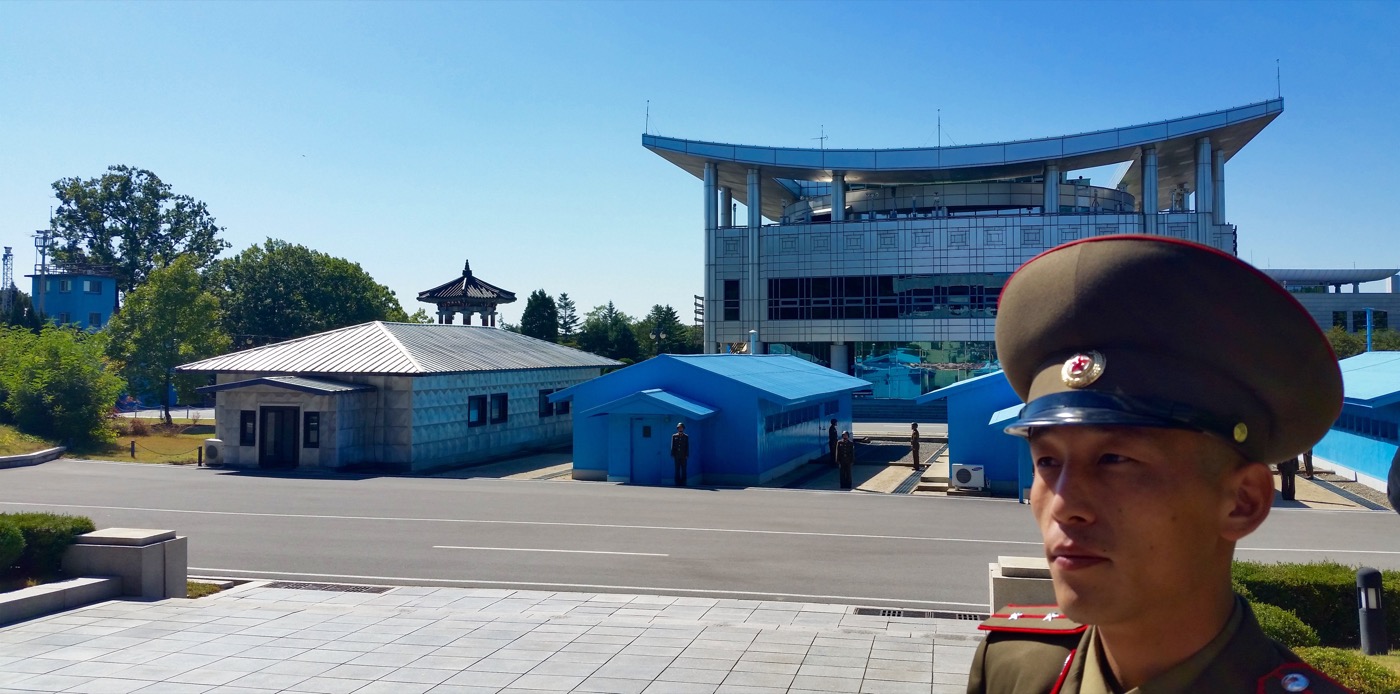
In the Democratic People’s Republic of Korea (DPRK), they practically insist that you take selfies in front of the South Korean Peace House and the blue UN conference huts. As a tourist, you’ll scutter around on the steps leading down to the famous Military Demarkation Line (MDL), then wave and chat to restless-looking soldiers of the Korean People’s Army.
As we wander quite freely around the JSA and Panmunjom (the area around the JSA), we’re told all about the different incidents which have occurred at the famous, heavily-guarded border. The axe “accident” which occurred after a South Korean soldier allegedly threw an axe at a North Korean soldier during a tree-felling operation is a good example. This is a popular tale for the tour guides on the South to tell, but to them it’s an axe murder, committed by a North Korean soldier who got a bit more emotionally invested in a tree’s life than he should’ve.
This little tour is one of the first in a small selection of military-related tours which heavily emphasise the apparently aggressive nature of the “puppet Government” in the South.
Let me say that again: a small selection. Almost a token, in fact. What would you be expecting from a four-day group tour around select areas of the DPRK? Constant attempts to brainwash you? Propaganda and self-criticism sessions? Occasional insults directed towards the Americans on the tour?
North Korea is famous for this sort of thing, and while the official position is ludicrous aggression towards the “imperialists”, the reality on the street with the average North Korean person in Pyongyang is very, very different.
Nice to meet you
It’s 4pm on the 7th of October, and dozens of eager tourists from all over the world are gathering for a pre-tour briefing in the offices of Koryo Tours, the mostly-British-run, Beijing-based travel company specialising in tours of North Korea.

They have a healthy relationship with the state-run Korean International Tourism Company (KITC) of the DPRK, a 200+ strong army of English-speaking, well-dressed, well-mannered and welcoming Korean hosts whose main job for the Workers Party of Korea (WPK) is to show foreigners a side of North Korea that they don’t get to see in the press, up close and personal.
When we’ve sat down in Koryo’s presentation room, we’re all given blue pouches full of all the forms and some useful information we’ll need for our time in North Korea. I quickly flip to the Korean phrases section, eager to see how my favourite foreign language differs north of the DMZ. Realising that the words written down are one level more polite than the typical Korean words I use when speaking to people in Seoul, I ask the person in charge of this briefing, Vicky (also my group’s British guide) whether this is an example of how every day North Koreans speak to one another. Yes, she says, it is. Finally, all that polite-speaking training I had at Korean school in Seoul was going to pay off.
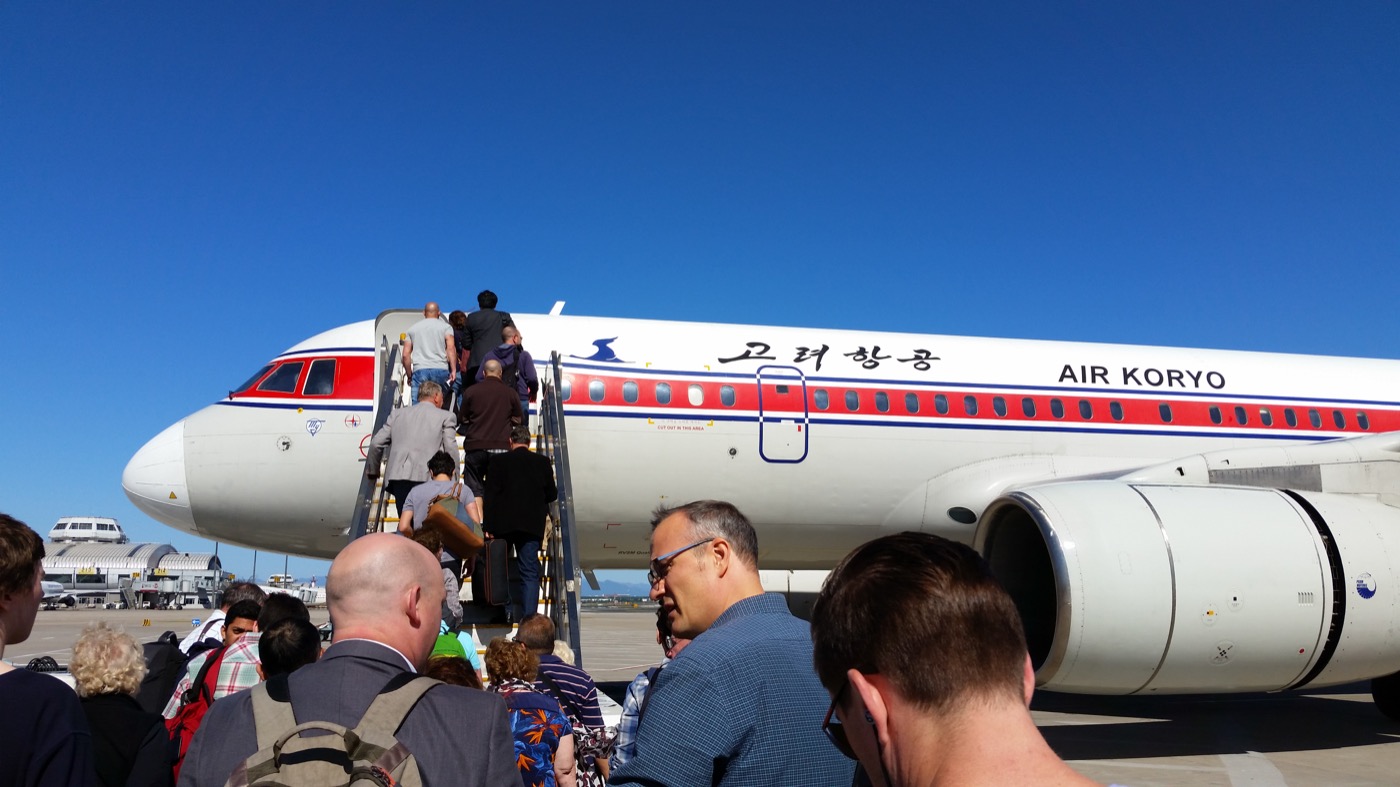
The differences don’t end there, though. Where’s all the Konglish I’ve become accustomed to in South Korea? Where’s “Pa-ee-ting” (fighting!) to offer someone good luck? Where’s “na-ee-su” (nice) to express your respect at someone’s super cool behaviour? Thankfully, one piece of Konglish at least endures, the most important one: “Coffee” is still “Koh-pee”.
The biggest difference is the word for the country, however. In South Korea, when talking the Korean langage, culture, people or even the country the word “Han-guk” is the base. Not in the North: “Cho-son” is the country here. I immediately decide to wipe “Han-guk” from my vocabulary for the next four days. I most certainly don’t want to confuse the two.
One of the first phrases is in this book is a very important one. It is a phrase which lends itself to a popular Korean song, known as “Ban-gap-sum-nee-da”, or in English, “Nice to meet you”. This song, for better or worse, is known by most people familiar with North Korea. It’s a go-to Karaoke classic in the North. It doesn’t feature any political language, it’s easy to learn and sing, and it has a catchy hook that even non-speakers can get into quickly.
“Nice to meet you,” I say in Korean to my new guides. They’re both well-presented, dressed immaculately in western-style suits sporting shiny, red, state-gifted badges of Kim Il-sung and Kim jong-il on the lapelles.
The people of North Korea don’t see anywhere near as many tourists as their counterparts in the South, but the guides are used to spending time with foreigners. They’ve met a fair few people who’ve formally learned how to speak Korean, too, and I’m one of two in our group. When they ask me where I learned, however, I decide for now to leave out where it was that I learned and simply talk about my self-study back in the UK. One of the suggestions from Koryo was to avoid political conversations, and this early on I’m being extra careful.
After being introduced to our tour cameraman and our tour bus driver, we set off for our first stop: The Kim Il-sung football stadium.
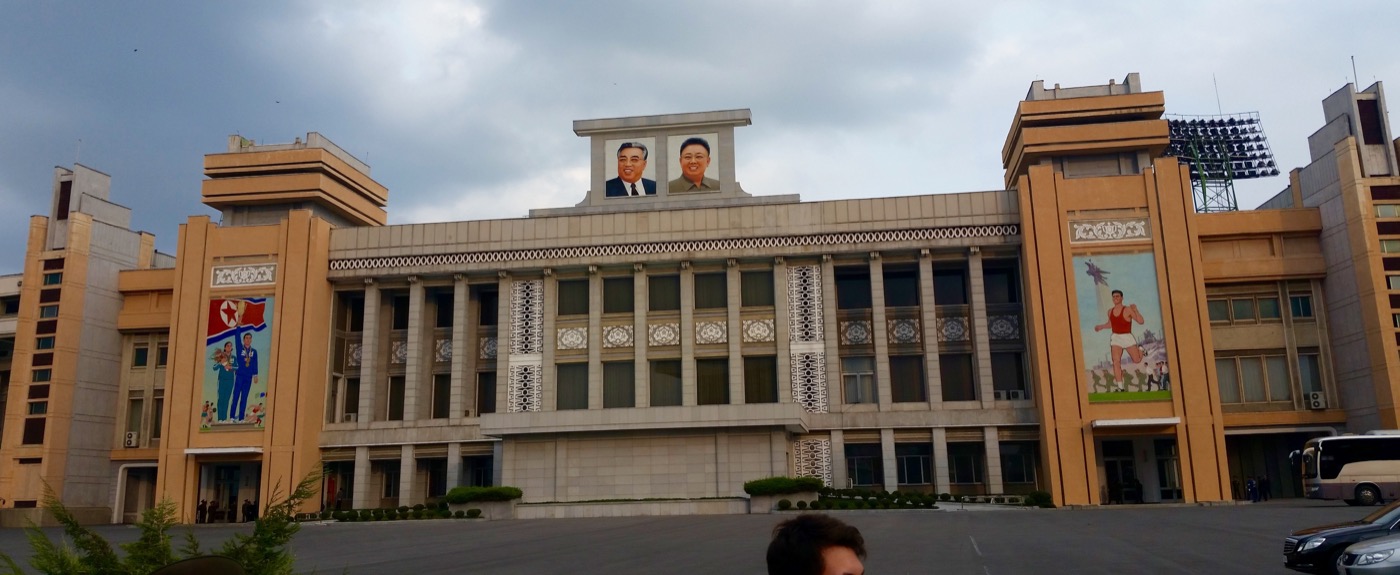
We were fortunate enough to be arriving in Pyongyang just as the national football team was starting its round of World Cup qualifying matches for the 2018 FIFA World Cup in Russia. Today’s match: DPRK vs the Phillipines.
We were a little late because of our slightly delayed flight, but thankfully one of the KITC guides was ready with tickets which we each purchased for €50. The crowd was cheering from the stadium. The match had kicked off and was in full swing.
We rushed to the side entrance, and were met by a group of soldiers waiting inside. The KITC guide who led us to the stadium started asking for us to be let in, and a woman sitting at a table setting tickets got involved too. Soon this led to a shouting match.
I was standing at the front of the procession of tourists, eager to get into the stadium, and what little I could glean from the argument was that because we were late, we couldn’t come in.
Soon, an older gentleman emerged from the stadium for a moment to deliver a message to someone outside, and when he tried to re-enter, the soldiers stopped him. He quickly started scolding the soldiers, and soon we were all let in.
A small walk through the tunnels of the stadium innards led us to one of the gates into the stadium proper, where about a dozen soldiers stood in a huddle watching the match. The cheers increased quickly in volume as we approached the gate and when one of the soldiers noticed us, they began to make an opening in their huddle. The darkness of the tunnel subsided and made way to our first truly awe-inspiring North Korean sight: a crowd of football supporters.
The stadium was completely packed, all 70,000 seats were occupied and many more people stood on the steps around the seats. This is Pyongyang’s second largest stadium, after the May Day Stadium, which currently holds the title of worlds largest football stadium. (There’s a video of parts of the match here)
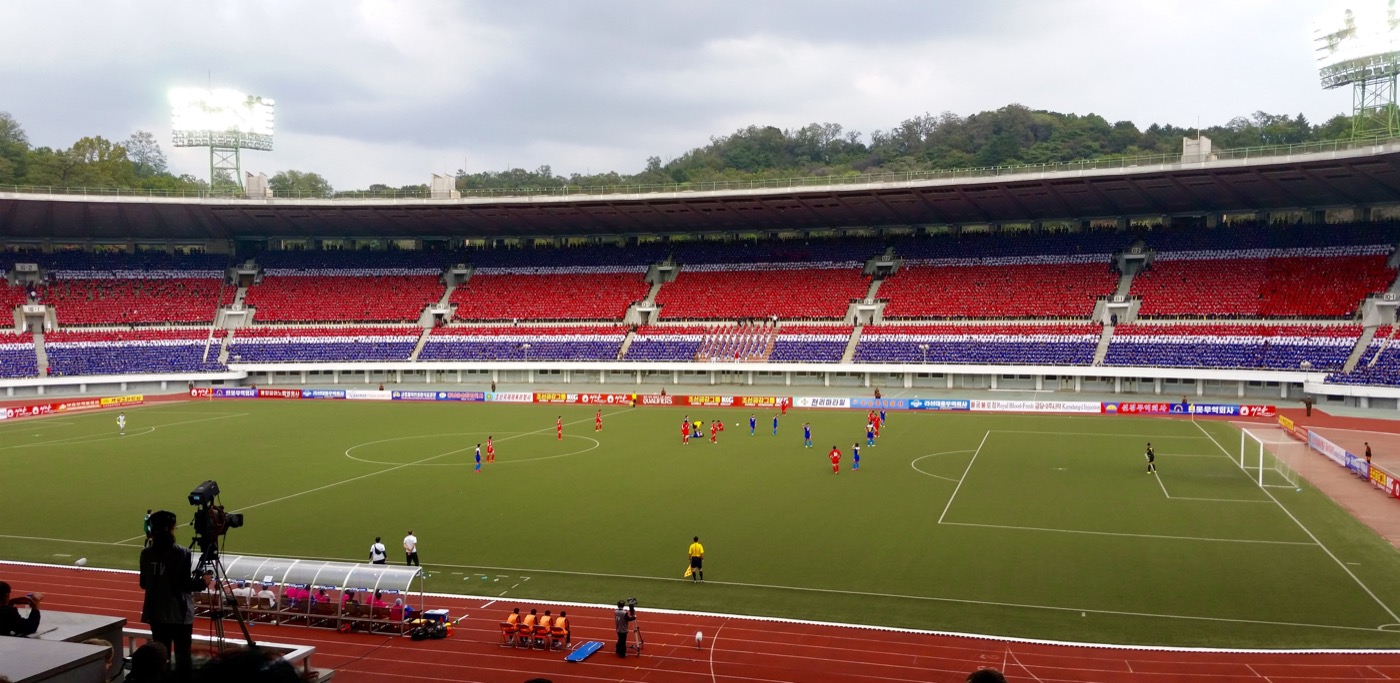
Half of the seats on the side of the stadium opposite to ours were occupied by a crowd of people clothed to create the red, white and blue stripes of the DPRK flag, with a large group of school children in the middle leading the cheers. Photos and videos can’t properly capture the awe that we felt when we saw this incredible organised effort. Not a moment of joy or sadness in this match was missed by this enormous group of cheerleaders.
But the enthusiasm felt through the rest of the stadium was not felt in our section. The Koreans we were joining weren’t quite expecting our arrival, and some of them had taken what I can only assume were meant to be our seats. But it’d be pointless to argue that I was happy for them to take them, so we just sat down and enjoyed.
It was an eventful match, with many near-goals by the DPRK team in their bright red kits, and a few good attempts to gain control by the Phillipines, many close-call injuries and a couple of little arguments with the referee on the side of the Phillipines.
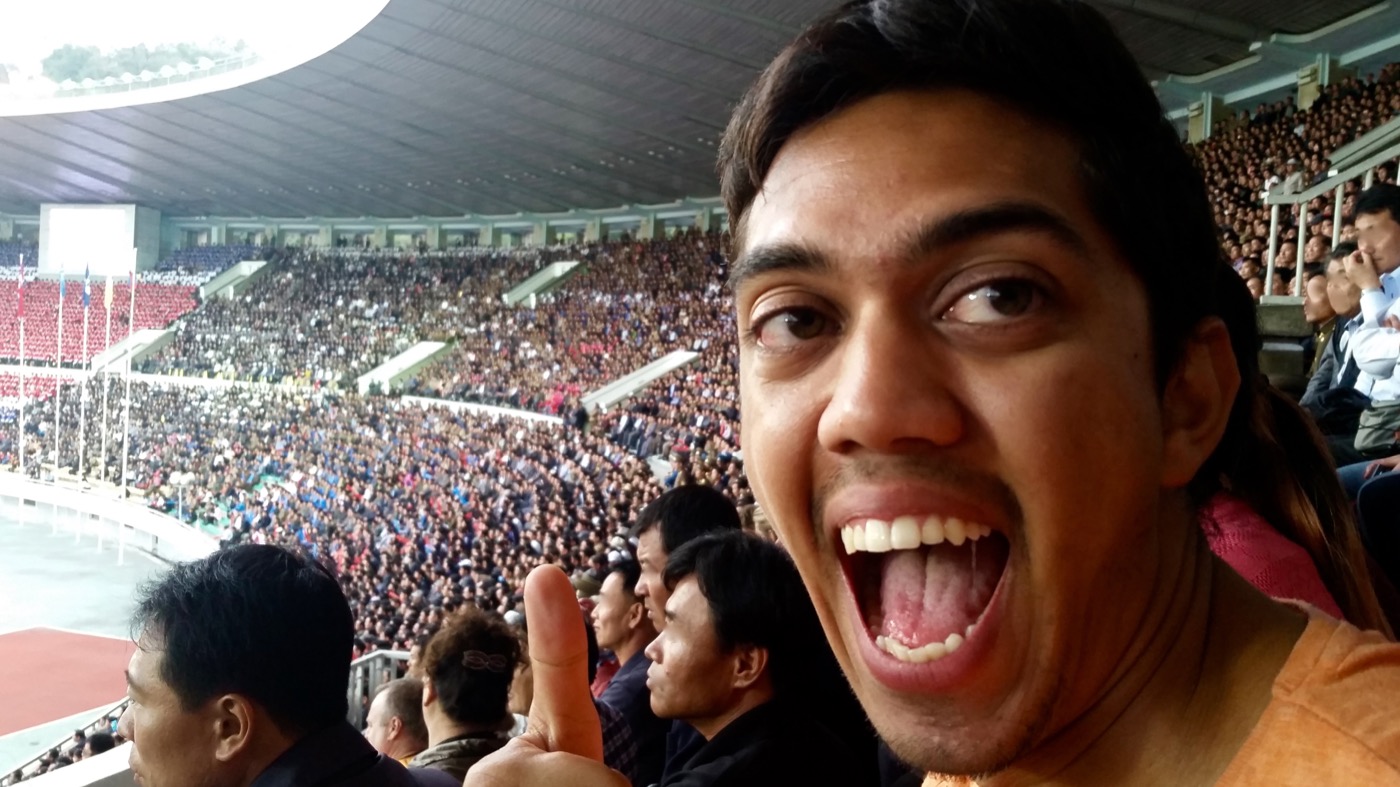
When we first sat down, our section of the crowd felt uneasy, but after the second half some Koreans started smiling and interacting with us when we cheered. At about the 60-minute mark, the cheerleaders opposite our stand started a series of Mexican waves, and when the wave swept through our section, we lifted ourselves out of our seats and threw off all the tension. From then on, the crowd was cheering enthusiastically again all at once, and I witnessed what I’d come to know as a “single heart of unity,” a phrase favoured by our guide whenever we needed to stick together and work together for the good of the tour.
Though the match ended with a disappointing draw, it was an entertaining 90 minutes, but we were ready to go. All the tour groups were staying at the Yanggakdo Hotel with most other foreigners and members of the international press. The hotel is nicknamed by foreigners as Alcatraz for its location on an island in the middle of the Taedong river that runs through Pyongyang, but that’s not the only similarity though. as we make our way there our guide tells us that we aren’t to leave the area around the hotel on our own, and in fact as we soon learn, there’s no time to do that anyway. Apart from the massive itinerary we have ahead of us, Pyongyang is extremely busy during our stay.
According to our British guide, Pyongyang isn’t a quiet place most of the time. It is the capital city, after all. But it’s especially packed at the moment because we’re visiting for the 70th anniversary of the foundation of the Worker’s Party of Korea, the party which has ruled the the people of North Korea for the past seven decades.
The streets are packed with buses, cars, minivans, the occasional lorry and the occasional military jeep or truck. People everywhere are heading to some important practice or another, heading back from the football match or just making their daily commute home after a long day at work.
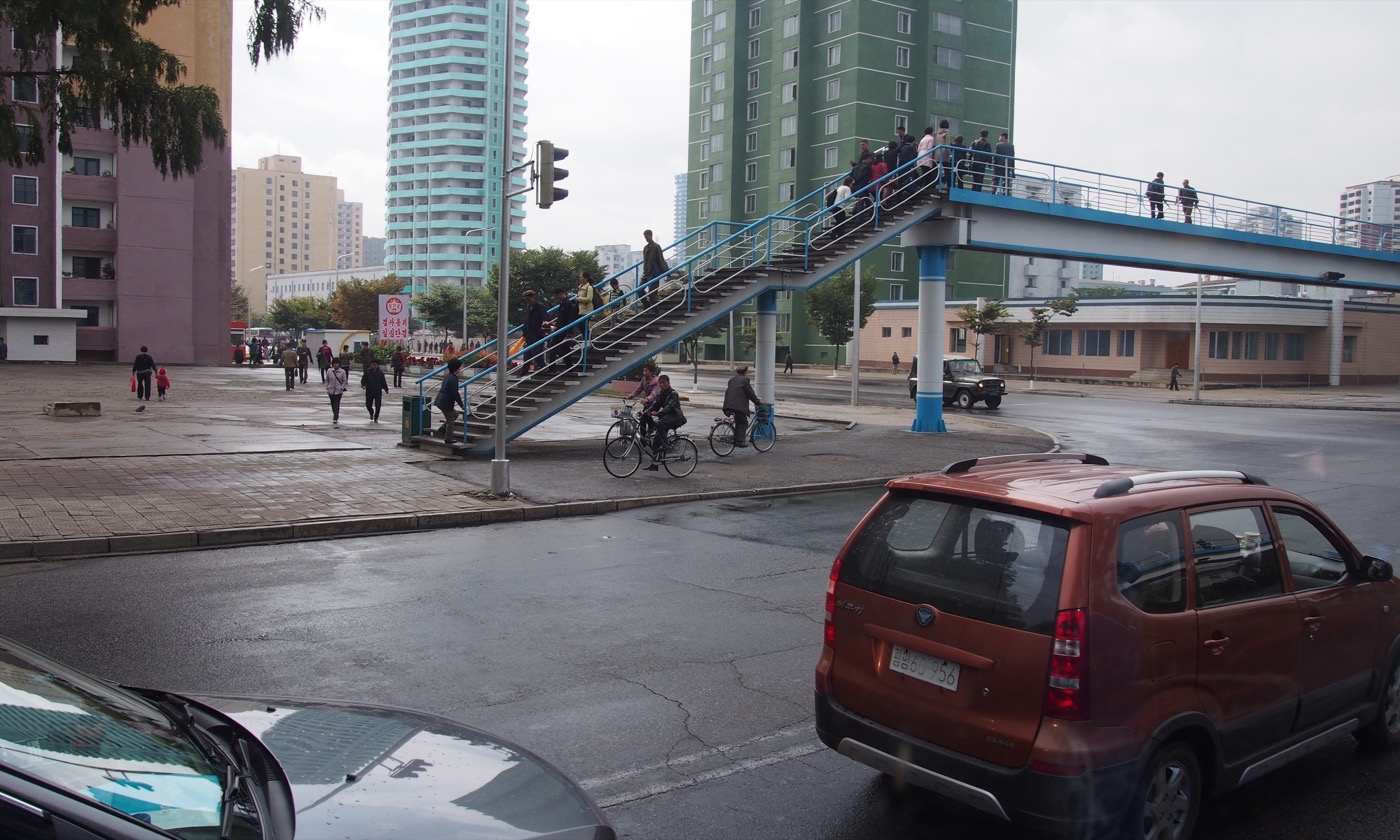
A tram system which began operation in 1991 carries hundreds around in Czechoslovakian-made carriages as electrically-powered trolleybuses pick up commuters on other routes, and the 16 metro stations’ entrances pulse with life as passengers travel along the two lines, Cheollima (천리마선) and Hyeoksinseon (혁신선). Pyongyang, at least during our trip, is a bustling mini-metropolis.
It’s hard to see much for a few parts of our bus ride to the hotel, for although most of the city is quite well-lit, there are still many sections where streetlamps are absent. Lighting our way is the fairly modern Pyongyang skyline and the occasional duel-portraits of Kim Il-sung and his son, Kim Jong-il, captioned by the ubiquitous eulogy of the Kim dynasty’s first two dictators, “Leaders Kim Il-sung and Kim Jong-il will be with us always”.
Once reach the Yanggakdo hotel we check in in the busy lobby, have our first dinner (Western food, sadly) and get to know our fellow tourists a little. Everybody is tired, but some of us are determined to burn the candle at both ends despite a very early start the next day. After all, we’re only here for four days.

The hotel basement features karaoke, billiards, bowling, ping-pong and a pool, so Rishi and I head down to sample most of them. This is my first chance to talk with Koreans willing to chat with me. I make the most of it with the staff working in all these places and find it’s surprisingly easy to adapt my language to the DPRK.
We enjoy a couple of drinks of North Korean’s own lager accompanying a best-of-three billiards match, sing a few songs in the huge communal Karaoke room, then bowl a few rounds with the lady working in the small three-lane bowling alley. Suitably sedated against the bizarreness of it all, we head to our twin room with its key-card lock system and five-channel TV. Flipping past Al-Jazeera and CCTV to the Korean channels, we see the news of the day (local people prepare for 70th anniversary celebrations and pay respects to the dead leaders then Kim Jong-un looks at things) and the the other a documentary about the Korean War.

As we stare out of our window at the quiet, darkening city of Pyongyang (the lights go out wherever they aren’t needed most of the time after people go to bed), we reflect on how far we’ve come in such a short time. A few hours ago, Rishi was dipping in the Persian Gulf surrounded by Dubai: luxury hotels in skyscrapers, fast cars and beautiful beaches. And me? Only 2 days before, less than merely 200km away, I was in a hotel in Incheon, South Korea, trying to mentally prepare for the culture shock.
Before you go…
This post is part of a series. You can see part two here, part three here, and part four here.
If you want to see some footage of the DPRK which I recorded, I’ve been posting videos on my YouTube Channel. Check it out. If you’d like a different but similar perspective on the tour I took, you can check out what my friend Rishi has written.
Also, Koryo Tours have plenty more DPRK information and photos if you want further glimpses into North Korean life, largely on social media: Instagram of Vicky, my tour guide, Koryo on Facebook, Koryo on Twitter, Koryo on Tumblr. They also have a website where you can find out about their tours and humanitarian projects, koryogroup.com.
Finally, if you’re interested in the divisive issue of the ethics of touring in North Korea, the Guardian recently wrote an interesting piece. Give it a read.
Heckle me on Twitter @basicallydan.